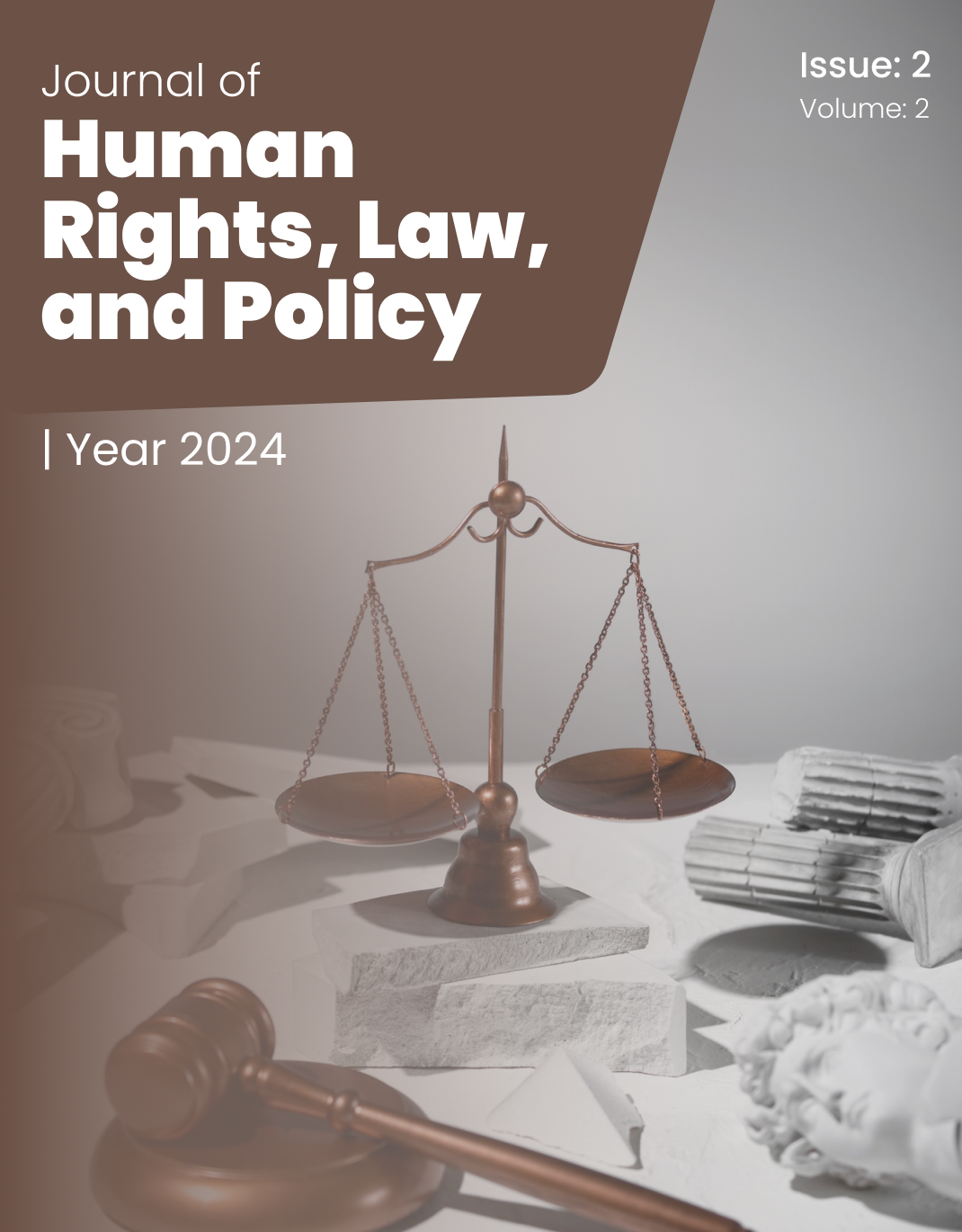Legal Pathways for Environmental Justice in Indigenous Territories
Keywords:
Biometric surveillance, human rights, privacy, qualitative study, Tehran, data security, discrimination, technological ethicsAbstract
This study aimed to explore the human rights impact of biometric surveillance through the lived experiences and perceptions of community members in Tehran. A qualitative research design was employed, utilizing semi-structured interviews with 27 participants recruited purposively from Tehran. Data collection continued until theoretical saturation was achieved. Interview transcripts were analyzed thematically using NVivo software to identify key themes related to privacy concerns, legal and ethical issues, social and community impacts, and technological factors. Four main themes emerged from the analysis. Privacy concerns dominated, with participants highlighting limited awareness of data collection, fears about data security breaches, surveillance-induced anxiety, behavioral modifications, and distrust of authorities. Legal and ethical issues revealed perceived regulatory gaps, challenges in obtaining genuine consent, and calls for accountable and ethical technology use. Socially, biometric surveillance was associated with discrimination, social exclusion, erosion of trust, low public awareness, and disproportionate effects on vulnerable groups. Technological factors, including accuracy limitations, data management practices, technological accessibility, system integration, user control deficits, and lack of transparency, further shaped participants’ perceptions. These findings underscore the multifaceted human rights challenges posed by biometric surveillance in a context with evolving technological adoption but insufficient legal safeguards. The study demonstrates that biometric surveillance significantly impacts individuals’ privacy, autonomy, and social well-being, particularly in settings lacking robust regulation and public engagement. Addressing these issues requires comprehensive legal frameworks, transparent and ethical technology deployment, enhanced public awareness, and inclusive governance models to safeguard human rights in the digital age.
Downloads
References
Alfred, T., & Corntassel, J. (2005). Being Indigenous: Resurgences against contemporary colonialism. Government and Opposition, 40(4), 597–614. https://doi.org/10.1111/j.1477-7053.2005.00166.x
Anaya, S. J. (2009). International human rights and Indigenous peoples. Aspen Publishers.
Benda-Beckmann, F. von. (2002). Legal pluralism and social justice in economic and political development. In Law and Society (Vol. 30, pp. 7–15).
Berkes, F. (2017). Sacred ecology (4th ed.). Routledge.
Coates, K. (2015). The Indian Act and the future of Aboriginal governance in Canada. University of Toronto Press.
Danielsen, F., Burgess, N. D., & Balmford, A. (2009). Monitoring matters: Examining the potential of locally based approaches. Biodiversity and Conservation, 18(2), 2555–2564. https://doi.org/10.1007/s10531-009-9768-4
Gadgil, M., Berkes, F., & Folke, C. (1993). Indigenous knowledge for biodiversity conservation. Ambio, 22(2/3), 151–156.
Garnett, S. T., Burgess, N. D., Fa, J. E., Fernández-Llamazares, Á., Molnár, Z., Robinson, C. J., ... & Zander, K. K. (2018). A spatial overview of the global importance of Indigenous lands for conservation. Nature Sustainability, 1(7), 369–374.
ILO. (1989). Indigenous and tribal peoples convention, 1989 (No. 169). International Labour Organization.
Kipuri, N., & Engle, N. L. (2016). Community-based natural resource management and indigenous peoples: An overview. Conservation and Society, 14(4), 345–355.
Mansell, M. G. (2019). Environmental justice and Indigenous peoples: The case of Aboriginal environmentalism in Canada. Geoforum, 102, 34–42.
Martinez-Alier, J. (2003). Environmental justice and economic distribution: The case of Mexico. Environment and Planning A, 35(5), 823–840.
Merry, S. E. (2006). Legal pluralism. Law & Society Review, 38(4), 869–896.
Peluso, N. L., & Lund, C. (2011). New frontiers of land control: Introduction. Journal of Peasant Studies, 38(4), 667–681.
Robbins, P. (2012). Political ecology: A critical introduction (2nd ed.). Wiley-Blackwell.
Schlosberg, D. (2007). Defining environmental justice: Theories, movements, and nature. Oxford University Press.
Schlosberg, D. (2013). Theorising environmental justice: The expanding sphere of a discourse. Environmental Politics, 22(1), 37–55.
Schlosberg, D., & Carruthers, D. (2010). Indigenous struggles, environmental justice, and community capabilities. Global Environmental Politics, 10(4), 12–35.
Shrader-Frechette, K. (2002). Environmental justice: Creating equality, reclaiming democracy. Oxford University Press.
Sikor, T., Fisher, M., & He, J. (2013). Legal empowerment and community forestry in Asia and Africa. Global Environmental Change, 23(5), 898–906.
UN. (2007). United Nations Declaration on the Rights of Indigenous Peoples. United Nations General Assembly.
Whyte, K. P. (2017). Indigenous climate change studies: Indigenizing futures, decolonizing the anthropocene. English Language Notes, 55(1-2), 153–162.
Whyte, K. P. (2018). Food sovereignty, justice, and Indigenous peoples: An essay on settler colonialism and collective agency. Food Ethics, 2(3), 151–169.
Downloads
Published
Submitted
Revised
Accepted
Issue
Section
License

This work is licensed under a Creative Commons Attribution-NonCommercial 4.0 International License.

